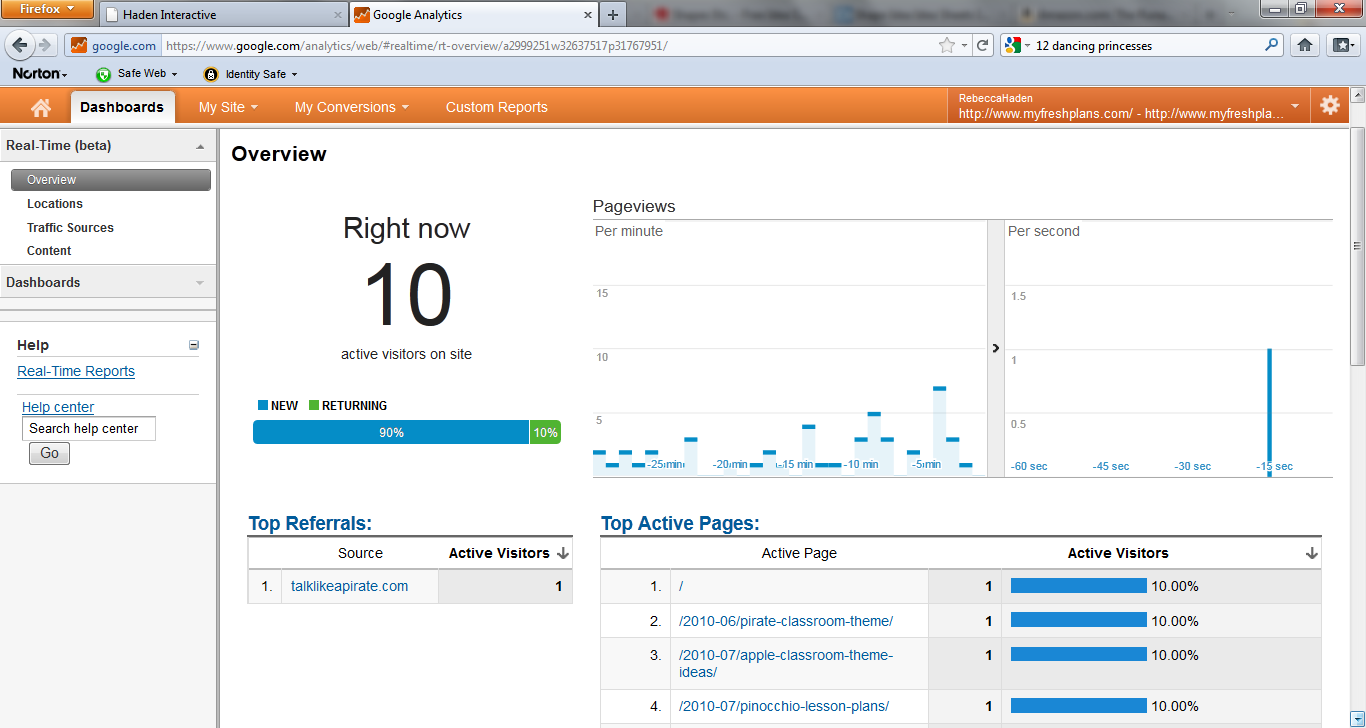Your cart is currently empty!

Google Analytics Real Time
We’ve been watching real time analytics (currently in beta testing) for a few days, and it’s fun to watch. You can cluster around the screen saying, “Ooh, look, someone from Papa! Where the heck is Papa?”
We know from experience that this initial thrill won’t last. Soon, in the absence of petulant birds or raids on orcs, you’ll want some actionable data.
Real time Google Analytics shows you the number of people visiting (10 at our lab site in the example at left), whether they’re new or returning, where they come from geographically and if they clicked through from another site, the page they’re visiting, and the keyword they used to get there if they came via search.
There have been paid services offering real time analytics for some time now, so Google’s update should please folks who’ve been paying just for that. Whether this will lure people away from Clicky, Chartbeat, and Woopra has yet to be seen.
You can create small data set problems for yourself with this; we saw people searching for Christmas lessons on October 1st, and we know from the larger data that this doesn’t mean we should skip Halloween and Thanksgiving and jump right in — but it does remind us that there are some early planners out there. It’s easy, though, to pay more attention to individuals brought to your attention than to larger data sets, so we need to keep that in mind. Brick and mortar businesses have notoriously been inclined to make changes based on a single squeaky wheel, and e-shops can fall prey to the same mistake.
Here’s how we expect Google Analytics real time to be useful:
- For social media. Seeing a topic gaining traction, we can bring it up at Twitter or Facebook for a quick response. Equally, we can see visitors brought to our site by a post at YouTube or Twitter and get a better idea of the immediate impact. If you monitor and adjust immediately, you may get more traction.
- For unusual events. When our lab site was featured in the Google Doodle, we only knew because our site went down briefly (our webmaster was asleep at the time). It wasn’t until the following day that we realized the extent of the spike. Had we known in real time, we could have nipped over and added a call to action to the page that was being inundated with visitors. Businesses — particularly ecommerce — that run sales and specials often will find this more valuable.
- For live chat. If you have someone pop up and say, “Hello, my name is James. How may I help you?” you can identify people and their needs more precisely and provide a more convincing interaction.
Some commenters are saying that things just don’t change fast enough to make the ROI for real time significant. That depends on your business. It may also depend on your approach to data, how agile your firm is, and how much free time you have. We were surprised, with FreshPlans, to see that we have people there all the time. From looking at our data, from our social media experience with this population, and from our own knowledge of our target market, we had a mental image of our visitors checking in before school starts, looking in at lunchtime, and then having another little flurry after school. We didn’t really expect to see 10 people on our site early on Sunday morning. Our ideas about what’s “down time” at our site, and a good time to experiment with things and change things, underwent some adjustment. We now know that we should make all our changes behind the scenes and then make them public all at once, because there is never a time with zero visitors.
As time goes on, we’ll learn more about how real time analytics affects our understanding and our actions. For right now, we’re seeing its value most with social media. We’d love to hear about your experiences and thoughts about this!
by
Tags:

Leave a Reply